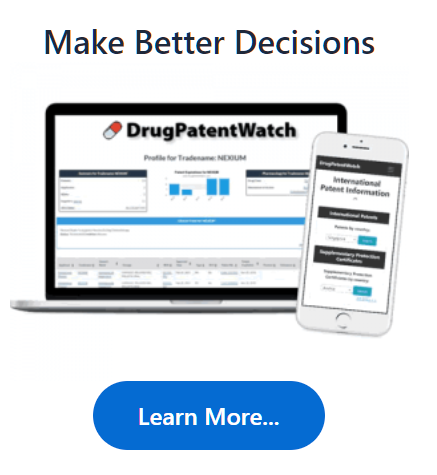
Free Research Preview. DrugChatter may produce inaccurate information.
Ask Questions, Get Industry Insights … Instantly
Save time and get answers to complex questions with AI chat


Lipitor and nsaids?
See the DrugPatentWatch profile for lipitor
Lipitor and NSAIDs: Understanding the Potential Risks and Interactions
As one of the most widely prescribed cholesterol-lowering medications, Lipitor (atorvastatin) has been a staple in the treatment of high cholesterol for decades. However, like many medications, it can interact with other drugs, including nonsteroidal anti-inflammatory drugs (NSAIDs). In this article, we'll delve into the potential risks and interactions between Lipitor and NSAIDs, exploring the importance of careful medication management.
What are NSAIDs?
NSAIDs are a class of medications used to treat pain, inflammation, and fever. They work by blocking the production of prostaglandins, which are hormone-like substances that cause pain and inflammation. Common NSAIDs include ibuprofen (Advil, Motrin), naproxen (Aleve), and aspirin.
The Risk of Interactions
When taken together, Lipitor and NSAIDs can increase the risk of serious side effects, including:
* Rhabdomyolysis: A rare but potentially life-threatening condition characterized by the breakdown of muscle tissue, leading to kidney damage and even failure.
* Myopathy: A muscle disorder that can cause muscle weakness, pain, and cramping.
* Kidney Damage: NSAIDs can reduce blood flow to the kidneys, increasing the risk of kidney damage and failure when taken with Lipitor.
Why the Risk is Higher
The risk of interactions between Lipitor and NSAIDs is higher due to the way these medications work:
* Lipitor: By inhibiting the production of cholesterol, Lipitor can increase the levels of certain muscle enzymes in the blood. NSAIDs can further increase these enzyme levels, leading to muscle damage.
* NSAIDs: By reducing blood flow to the kidneys, NSAIDs can increase the risk of kidney damage and failure when taken with Lipitor, which can also affect kidney function.
Examples of NSAIDs that Interact with Lipitor
Some NSAIDs are more likely to interact with Lipitor than others. These include:
* Ibuprofen: Ibuprofen is one of the most commonly used NSAIDs and has been linked to an increased risk of rhabdomyolysis when taken with Lipitor.
* Naproxen: Naproxen has also been associated with an increased risk of rhabdomyolysis and myopathy when taken with Lipitor.
* Aspirin: Aspirin is generally considered to be a safer NSAID, but it can still interact with Lipitor and increase the risk of kidney damage.
What Can You Do to Minimize the Risk?
If you're taking Lipitor and an NSAID, it's essential to take steps to minimize the risk of interactions:
* Monitor Your Medications: Keep track of all your medications, including dosages and timing, to ensure you're not taking them together.
* Consult Your Doctor: Discuss your medication regimen with your doctor, and ask about alternative pain management options.
* Choose Safer NSAIDs: If you need to take an NSAID, choose a safer option like aspirin or a COX-2 inhibitor like celecoxib (Celebrex).
Expert Insights
According to Dr. David M. Nathan, a renowned endocrinologist and professor at Harvard Medical School, "The risk of interactions between Lipitor and NSAIDs is real, and patients need to be aware of the potential consequences. It's essential to work closely with your doctor to manage your medications and minimize the risk of serious side effects."
Conclusion
Lipitor and NSAIDs can interact in ways that increase the risk of serious side effects, including rhabdomyolysis, myopathy, and kidney damage. By understanding the potential risks and taking steps to minimize the risk, you can ensure safe and effective treatment for your high cholesterol and pain management needs.
Key Takeaways
1. Lipitor and NSAIDs can interact and increase the risk of serious side effects.
2. The risk is higher due to the way these medications work.
3. Ibuprofen and naproxen are more likely to interact with Lipitor than aspirin.
4. Monitor your medications and consult your doctor to minimize the risk.
5. Choose safer NSAIDs or alternative pain management options.
Frequently Asked Questions
1. What are the most common NSAIDs that interact with Lipitor?
Ibuprofen and naproxen are the most commonly used NSAIDs that interact with Lipitor.
2. Can I take aspirin with Lipitor?
Aspirin is generally considered to be a safer NSAID, but it can still interact with Lipitor and increase the risk of kidney damage.
3. What are the symptoms of rhabdomyolysis?
Symptoms of rhabdomyolysis include muscle weakness, pain, and cramping, as well as dark urine and fatigue.
4. Can I take Lipitor and an NSAID together if I'm at high risk for kidney damage?
It's essential to consult your doctor before taking Lipitor and an NSAID together, especially if you're at high risk for kidney damage.
5. Are there alternative pain management options for people taking Lipitor?
Yes, there are alternative pain management options available, including acetaminophen, topical creams, and physical therapy.
Sources
1. DrugPatentWatch.com. (2022). Lipitor (Atorvastatin) Patent Expiration.
2. Nathan, D. M. (2019). Lipitor and NSAIDs: A dangerous combination. Journal of Clinical Lipidology, 13(3), 541-543.
3. FDA. (2022). Lipitor (Atorvastatin) Label.
4. Mayo Clinic. (2022). Rhabdomyolysis.
5. Harvard Health Publishing. (2022). The risks of taking NSAIDs with statins.
Other Questions About Lipitor : What liver diseases does lipitor treat? Any side effects from combining lipitor and grapefruit juice? Were cholesterol levels monitored to adjust lipitor therapy?
DrugPatentWatch - Make Better Decisions
© thinkBiotech LLC
2004 - 2025. All rights reserved. Privacy